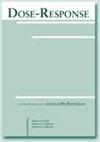Phytochemical Properties of Crataegus azarolus Berries Decoction Extract and Evaluation of its Protective Activity Against Acetic Acid-Induced Ulcerative Colitis in Rats
IF 2.4
4区 医学
Q3 PHARMACOLOGY & PHARMACY
引用次数: 0
Abstract
The present study aims to evaluate the protective effect of Crataegus azarolus berries decoction extract (CAB-DE) against acetic acid-induced ulcerative colitis as well as the mechanisms implicated in such protection. Adult male Wistar rats were separated into seven groups: Control (H2O), acetic acid (AA), AA + various doses of CAB-DE (100, 200, and 400 mg/kg, b.w.,p.o.), and AA + sulfasalazine (100 mg/kg, b.w.,p.o.) or gallic acid (50 mg/kg, b.w.,p.o.) during 10 days. All rats were kept fasting overnight and ulcerative colitis was induced by rectal infusion of AA (300 mg kg−1, b.w.) (3%, v/v, 5 mL kg−1 b.w), for 30 s. The colon was rapidly excised and macroscopically examined to measure ulcerated surfaces and the ulcer index. In vitro, we found that CAB-DE exhibited a high antioxidant activity against DPPH radical (IC50 = 164.17 ± 4.78 μg/mL). In vivo, pretreatment with CAB-DE significantly protected the colonic mucosa against AA-induced damage by stimulating mucus secretion, reducing ulcer index as well as histopathological changes. Also, CAB-DE limited the oxidative status induced by AA in the colonic mucosa, as assessed by MDA and H2O2 increased levels and the depletion of both enzymatic activities and non-enzymatic levels. In addition, AA intoxication increased iron and calcium levels in colonic mucosa and plasma, while CAB-DE pretreatment regulated all intracellular mediators deregulation and significantly reduced inflammatory markers such as CRP (1.175 ± .04 ─ .734 ± .06 μg/dl) and ALP (161.53 ± 5.02 ─ 98.60 ± 4.21 UI/L) levels. We suggest that CAB-DE protected against AA-induced ulcerative colitis due in part to its antioxidant and anti-inflammatory properties.山楂果煎剂提取物的植物化学特性及其对醋酸诱导的大鼠溃疡性结肠炎的保护作用评估
本研究旨在评估山楂果水煎剂提取物(CAB-DE)对醋酸诱发的溃疡性结肠炎的保护作用,以及这种保护作用的相关机制。成年雄性 Wistar 大鼠被分为七组:对照组(H2O)、醋酸组(AA)、AA + 不同剂量的 CAB-DE(100、200 和 400 毫克/千克,体重,口服)组、AA + 柳氮磺胺吡啶(100 毫克/千克,体重,口服)或没食子酸(50 毫克/千克,体重,口服)组,为期 10 天。所有大鼠均禁食过夜,并通过直肠灌注 AA(300 毫克/千克,体重)(3%,v/v,5 毫升/千克,体重)30 秒诱发溃疡性结肠炎。在体外,我们发现 CAB-DE 对 DPPH 自由基具有很高的抗氧化活性(IC50 = 164.17 ± 4.78 μg/mL)。在体内,CAB-DE 通过刺激粘液分泌、降低溃疡指数和组织病理学变化,明显保护结肠粘膜免受 AA 引起的损伤。同时,CAB-DE 限制了 AA 在结肠粘膜中诱导的氧化状态,具体表现为 MDA 和 H2O2 水平的升高以及酶活性和非酶水平的降低。此外,AA 中毒增加了结肠粘膜和血浆中的铁和钙水平,而 CAB-DE 预处理则调节了所有细胞内介质的失调,并显著降低了 CRP(1.175 ± .04 - .734 ± .06 μg/dl)和 ALP(161.53 ± 5.02 - 98.60 ± 4.21 UI/L)等炎症指标的水平。我们认为,CAB-DE 对 AA 诱导的溃疡性结肠炎有保护作用,部分原因是它具有抗氧化和抗炎特性。
本文章由计算机程序翻译,如有差异,请以英文原文为准。
求助全文
约1分钟内获得全文
求助全文
来源期刊

Dose-Response
PHARMACOLOGY & PHARMACY-RADIOLOGY, NUCLEAR MEDICINE & MEDICAL IMAGING
CiteScore
4.90
自引率
4.00%
发文量
140
审稿时长
>12 weeks
期刊介绍:
Dose-Response is an open access peer-reviewed online journal publishing original findings and commentaries on the occurrence of dose-response relationships across a broad range of disciplines. Particular interest focuses on experimental evidence providing mechanistic understanding of nonlinear dose-response relationships.
 求助内容:
求助内容: 应助结果提醒方式:
应助结果提醒方式:


